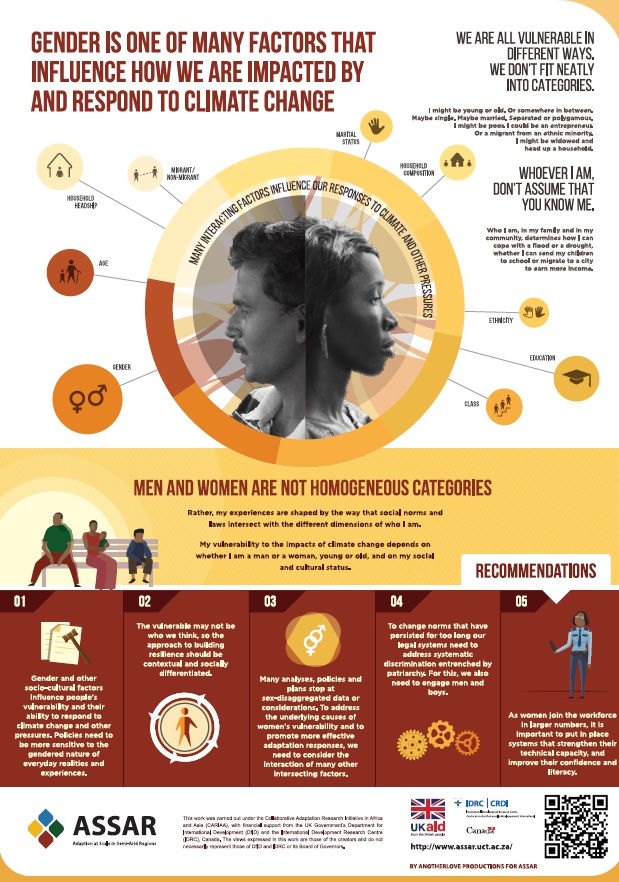Gender Infographics: Showing how gender influences responses to risk

Introduction
Climate change impacts and climate variability affect different people in different ways. While the harm caused by an impact is partly dependent on the event itself (a flood for example), the risks and vulnerabilities faced by people, households and communities are often socially-differentiated (e.g., by gender, ethnicity, age, wealth).
This means that a person’s agency, and ability to respond and adapt to both climatic and non-climatic risks, is affected by a complex mix of structural and institutional arrangements, gender relations, inequalities, and norms and traditions. Understanding this complexity is not only essential to ensuring that adaptation is sustainable and successful, but also that it is equitable and does not compromise people’s wellbeing.
How people experience and respond to risk varies, depending on factors like age, ethnicity, gender and class. These stunning infographics offer an easy-to-understand overview (click to enlarge – this will open the image in a new browser tab):
 |
 |
 |
 |
Yet, an appreciation of social differentiation in relation to climate change risks and impacts is largely absent from the existing research and literature and poorly addressed in prevailing adaptation practice. To address this, in each region of ASSAR we seek answers to the following questions:
- How do vulnerabilities to current risks vary among social groups?
- How do responses to current risks vary among social groups?
- How are vulnerability and response patterns changing, and why?
- What are the implications of current and proposed adaptation on the wellbeing and vulnerability of different social groups?
You can read more about ASSAR’s work on gender here.
(0) Comments
There is no content